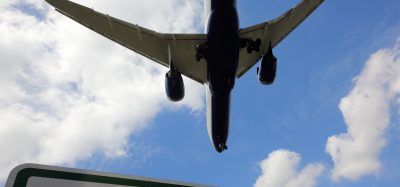Personalising ancillary sales all the way through to mPOS
- Like
- Digg
- Del
- Tumblr
- VKontakte
- Buffer
- Love This
- Odnoklassniki
- Meneame
- Blogger
- Amazon
- Yahoo Mail
- Gmail
- AOL
- Newsvine
- HackerNews
- Evernote
- MySpace
- Mail.ru
- Viadeo
- Line
- Comments
- Yummly
- SMS
- Viber
- Telegram
- Subscribe
- Skype
- Facebook Messenger
- Kakao
- LiveJournal
- Yammer
- Edgar
- Fintel
- Mix
- Instapaper
- Copy Link
Posted: 20 June 2017 | Simon Pont | CEO | ECR Retail Systems | No comments yet
Personalisation and passenger experience are key. Here’s an analysis as to whether the ancillary payment processes in place are fit for purpose…


Within a challenging competitive market, airlines are increasingly facing the challenge of developing incremental revenue to drive greater profitability. Coupled with expectations of excellent customer service, many airlines are looking even more closely at how to optimise the sales of ancillary services.
Typical sales include food and beverage, destination ticketing, duty-free products and seat upgrades. However, adopting this approach presents challenges, one of which is how to execute the correct broader ancillary, retail and payment strategies to enable this growth.
It also raises questions about whether airlines should view themselves simply as transport providers or moreover as highly sophisticated, mobile, multichannel retailers. Regardless of this, airlines need to adjust how they offer and sell ancillary goods and services to their customers.
Personalisation is the future of ancillary sales
The idea of driving customer revenue beyond the sale of tickets through ancillary services is nothing new. Mr Raphael Kuuchi, Commercial Director, AFRAA has written extensively about this subject in his piece titled “Ancillary Revenue – The New Craze for Airlines”.
He talks about the idea of bundled and unbundled (a la carte) fares. He also talks about the idea of “expense-based” and “convenience-oriented” sales, and cites several examples where ancillary sales strategies are positively transforming airlines.
Kuuchi’s report outlines that for ancillary sales to be successful, the right strategy and technology infrastructure is required to enable this. But, what does this mean? At a macro level, it requires airlines to take a holistic view of how ancillary sales take place, and the need to acknowledge the potential that personalisation offers passengers and airlines. Modern retailers are benefiting from personalisation, and there is no reason why airlines cannot do so too. Loyalty programmes are one such example of how personalisation can deliver ‘customer stickiness’ and increased revenue.
Omni-channel airlines
When passengers purchase their travel, they do so via multiple channels, including: online, direct, comparison websites as well as in person from travel agents. As these sales occur, there are usually many opportunities, across the customer journey, to market and sell ancillary goods and services. Are airlines tracking these moments, and data points, to personalise and provide other services?
Typical items sold include insurance, food and beverage, seat upgrades and retail. Whilst some airlines are already capitalising on this, many still are not. Regardless of their position, airlines need to capture information, and effectively utilise this data around the customers’ – needs and preferences. This will help form a single, holistic view of the customer across the entire customer lifecycle, which will in turn support sales programmes.
Does the payment strategy support the airline?
Once the appropriate ecommerce, personalisation, analytics and logistics technologies have been implemented across the airline, airlines need to consider whether their payment technologies are modern and suitable. Can they support payments with multiple currencies, vouchers, airline points and more? Importantly, can inflight mobile point of sale (MPoS) systems support contactless payments? Does the airline’s overall payment strategy meet customer expectations?
If we focus specifically on the MPoS systems that airlines use, one of the latest issues is whether they meet not only with PCI requirements but also VISA and MasterCard’s contactless mandate, which states that merchants that accept payments from these global payment networks must establish contactless payments as a standard by the end of 2019. Today airlines need to streamline the payment process and customers need to be able to pay for goods and services via contactless. Is this option available?
In addition, airlines need to ask whether the existing two or three-piece MPoS systems currently used are appropriate. The traditional ‘clunky’ approach of cabin crew carrying three devices – MPoS, card reader and receipt printer – while carrying out duties is no longer suitable. These devices suffer from poor connectivity (pairing issues) and energy usage, and are impractical for the cabin crew. This technology combination consumes unnecessary cabin space whilst older all-in-one devices do not support contactless payments, an option that customers often demand and are coming to expect as standard. Airlines would be well placed to explore all-in-one, contactless, MPoS technologies to support personalisation, sales and the overall customer experience.
Conclusion
Ancillary sales used to be the preserve of low cost airlines. This is no longer the case, as revised strategies are being considered and adopted by many airlines to enhance the customer experience and support growth.
Today, customers expect airlines to present themselves in a modern way. This means airlines are expected to offer in-flight internet connectivity, a joined-up customer experience, a modern payment experience, and an excellent retail offering that can be accessed online ahead of journeys. Consequently, this means passengers expect to be able to purchase good with ease.
The time for airlines to modernise is now. The question remains whether airlines truly appreciate the potential at their fingertips to offer personalised retail offerings to their passengers before, during and after their journeys.


In today’s world where personalisation and customer experience is key, airlines need to consider whether their offering is still relevant, and importantly, whether their payment options – including MPoS strategies are still fit for purpose for the modern customer.

















